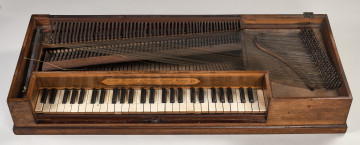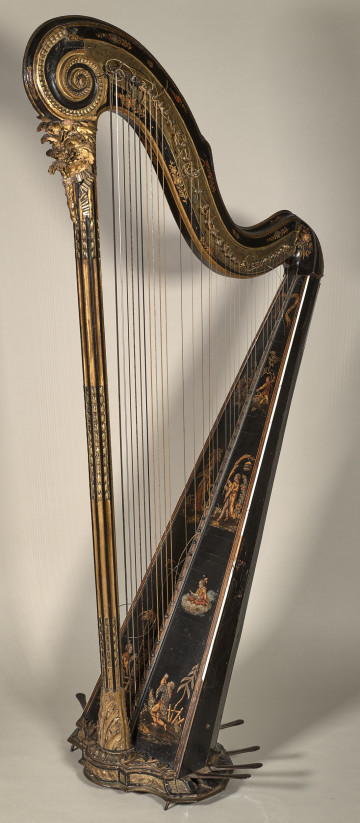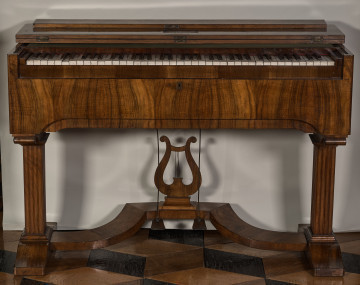
Square piano
1785
Castle Museum in Łańcut
Part of the collection: Broń, instrumenty, varia
In the 19th century, the upright piano was as common as horizontal instruments, such as the square piano or the grand piano. With the advent of the French Empire, Europe was dominated by a style called "empire". The shapes and ornamentation of musical instruments, furniture and various equipment referred to Roman, Greek or Egyptian antiquity. Upright pianos were given the form of a cabinet, a pyramid, a lyre, but also a giraffe. The name was suggested by the shape of the upper part of the instrument's body. The Łańcut’s giraffe piano bears the creator's plaque on the keyboard cover "Christoph Erler Bürger in Vien". The instrument has a 6-octave keyboard in the F1-f4 scale. In the years 1816 - 1836 Christoph Erler, a citizen of Vienna, ran a workshop. He became famous as an organ and piano builder. The upright piano purchased by the Museum-Castle is one of the few surviving instruments of the Viennese. Made in the 1820s, it bears traces of later repairs and additions to external decorations. The giraffe from the collection of the Łańcut museum was traditionally called a "pantalion", like many historical pianos, including upright ones. In fact, the term was borrowed from the name of Pantaleon Hebenstreit - the creator and virtuoso of complex dulcimer. King Louis XIV of France, who listened to them in 1705, named the instrument after the inventor - "pantaleon". Cymbals constructed in the 18th century, equipped with a keyboard and a hammer mechanism, were called Hammerpantaleon. Perhaps that is why in the 19th century in Poland pianos were called pantalions.
Teresa Bagińska-Żurawska https://orcid.org/0000-0002-9243-3967
Author / creator
Object type
musical instruments
Technique
construction of musical instruments
Material
Pinewood, cattle bone, brass, gold, silk (fabric), nut wood, pear wood ebonized
Creation time / dating
Creation / finding place
Owner
Muzeum - Zamek w Łańcucie
Identification number
Location / status

1785
Castle Museum in Łańcut

1789 — 1800
Castle Museum in Łańcut

1830 — 1833
Castle Museum in Łańcut
DISCOVER this TOPIC
Museum of King Jan III's Palace at Wilanów
DISCOVER this PATH
Educational path